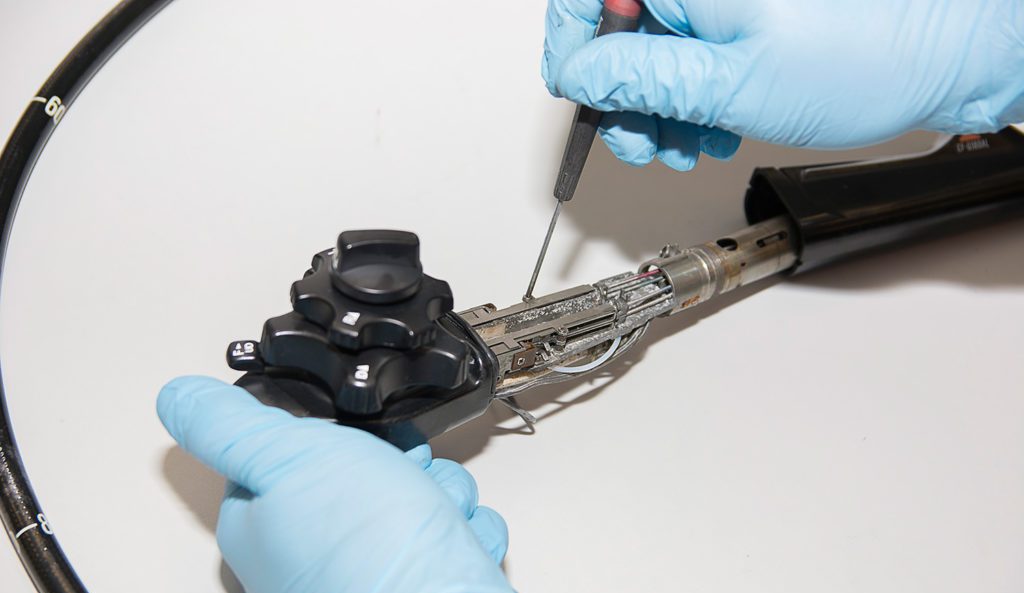
Cleaning and Disinfecting Gastrointestinal Endoscopy Equipment
Endoscopes are inadequately reprocessed and have raised undue fear regarding the potential for transmission of infection during endoscopy. When current guidelines for endoscope cleaning and disinfection are followed, this risk is virtually eliminated. This topic has largely been taken for granted by many endoscopists, however. Standardized cleaning and disinfection protocols have been available for some time, and, with few exceptions, changes have been gradual. This situation may have engendered some complacency on the part of endoscopists, to the point that many endoscopists were only vaguely aware of what went on “behind the curtain” of the endoscope reprocessing room; instruments were used on patients, taken away by gastrointestinal (GI) nurses or other health care personnel, reprocessed, and returned ready for patient use. As the amount of information available to patients increases via the Internet (often not based on scientific evidence), endoscopists must be able to discuss this subject confidently with their patients.
Since the first report of fiberoptic GI endoscopy in 1961, the endoscope has undergone almost continuous evolution in design. Although most of these developments have been aimed at improving the diagnostic and therapeutic capability of GI endoscopy, the introduction of fully immersible endoscopes in 1983 greatly facilitated the cleaning and disinfection of the internal channels of the endoscope. The development of video imaging technology, which provided a tremendous increase in the quality and resolution of the endoscopic image, had few implications for endoscope reprocessing. However, some changes have come at the cost of increasing the complexity of design, presenting new challenges to cleaning and disinfection. The addition of an elevator lever to the duodenoscope allowed easier cannulation of the papilla during endoscopic retrograde cholangiopancreatography (ERCP), although the new exposed movable part at the distal tip of the instrument and the associated control-wire channel also added new reprocessing steps. A similar type of elevator is present on current endoscopic ultrasound (EUS) endoscopes, or echoendoscopes. Echoendoscopes also possess an additional channel to inflate a balloon at the tip (needed to create the acoustic interface) that must be cleaned and disinfected. The incorporation of a dedicated high-flow water irrigation channel (distinct from the standard air and water channels) in some models of endoscopes adds yet another channel that requires reprocessing (regardless of use) in addition to the external equipment that connects to this channel.
Current reprocessing guidelines are discussed in detail. These guidelines, although applicable to nearly all GI endoscopes, do not apply to sheathed endoscope systems. One endoscopic sheath system that is approved by the U.S. Food and Drug Administration (FDA) is commercially available. In contrast to the popular misconception of an “endoscope condom,” the sheath is actually a part of the endoscope insertion tube and contains several channels. Because this is a complete endoscope system, the sheaths are not compatible with other endoscopes. Although the sheath itself is disposable and does not need conventional cleaning and disinfection (i.e., a new sheath is used for each procedure), the control dials on the handpiece are not protected and do require reprocessing. These dials are removable and require conventional cleaning and disinfection or sterilization. There are two main disadvantages of the system:
(1) The only currently marketed sheathed endoscope for use in the GI tract is a flexible sigmoidoscope,
(2) The imaging technology of the instrument uses fiberoptic rather than video-chip technology. Readers should refer to the manufacturer’s instructions for reprocessing this type of endoscope.

